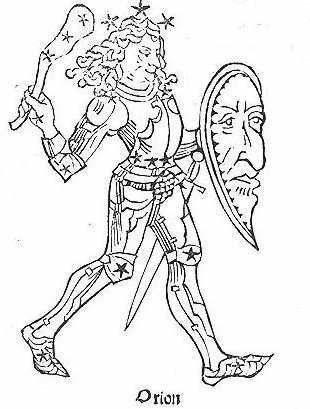|
THE D TABLET
I have suggested the stars were 'fixed' to the time of the Golden Bull:
And in line Da1 we have found similarities with line Ga1:
This indicates we should compare the glyphs not with what ideally should be perceived at the Full Moon in the nights but rather with the stars derived from the days in the calendar for the Sun. It was no longer necessary to go out in a night with a clear sky. ... Most published descriptions of Aagjuuk tend to leave the impression that it suddenly appears on cue as if out of nowhere... This definition is somewhat misleading because throughout the autumn and winter months at latitudes above the Arctic Circle Aagjuuk's principal star, Altair, is one of the brightest and most visible stars in the south and western sectors of the sky. But so completely is Aagjuuk identified with mid-December and the winter solstice that one Igloolik elder, invited to point to the constellation in early November, firmly replied that we would not see it until around Christmas, and this in spite of the fact that Altair was at the time in full view to the southwest ... In which case we perhaps should primarily contemplate the conjunction between the picture drawn for Da2-5 with *90 rather than with the important star Nash (γ in the Tea-pot):
I have picked out Da2-5 because we will here be able to compare with Ga2-26 at *120:
Immediately we are struck by how they are oppositely oriented. A quick look at the multitude of similar glyphs will reveal the variant which is open in front is the norm and therefore we should perceive Da2-8 as a reversed variant (with no future ahead). I have no great listed heliacal star at Da2-6, but in the Orion constellation we are now at his Right Elbow (μ down in the Milky Way river)
as well as at the top of his Club (χ):
But once upon a time the position at June 19 ought to have been determined from Nash (the Point) at the Full Moon. And only the bottom half of the glyph is reversed (twisted half a turn around)::
Hiro, 1. A deity invoked when praying for rain (meaning uncertain). 2. To twine tree fibres (hauhau, mahute) into strings or ropes. Ohirohiro, waterspout (more exactly pú ohirohiro), a column of water which rises spinning on itself. Vanaga. To spin, to twist. P Mgv.: hiro, iro, to make a cord or line in the native manner by twisting on the thigh. Mq.: fió, hió, to spin, to twist, to twine. Ta.: hiro, to twist. This differs essentially from the in-and-out movement involved in hiri 2, for here the movement is that of rolling on the axis of length, the result is that of spinning. Starting with the coir fiber, the first operation is to roll (hiro) by the palm of the hand upon the thigh, which lies coveniently exposed in the crosslegged sedentary posture, two or three threads into a cord; next to plait (hiri) three or other odd number of such cords into sennit. Hirohiro, to mix, to blend, to dissolve, to infuse, to inject, to season, to streak with several colors; hirohiro ei paatai, to salt. Hirohiroa, to mingle; hirohiroa ei vai, diluted with water. Churchill. Ta.: Hiro, to exaggerate. Ha.: hilohilo, to lengthen a speech by mentioning little circumstances, to make nice oratorial language. Churchill. Whiro 'Steals-off-and-hides'; also [in addition to the name of Mercury] the universal name for the 'dark of the Moon' or the first day of the lunar month; also the deity of sneak thieves and rascals. Makemson. According to the era of Bharani (*41.4) the right ascension night of Nash would be *273 - *41 = *232 → 8 * 29 (→ Mercury, Hiro)..
|
||||||||||||||||||||||||||||||||||||||||||||||||||||||||||||||||||||||||||||||||||||||||||||||||||||||||||||||||


